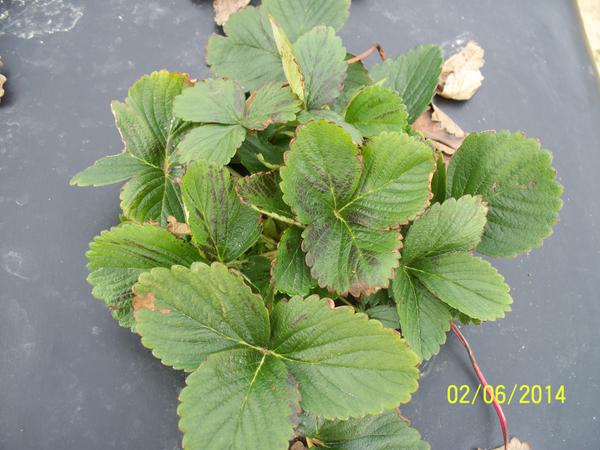Problem
Wind damage.
Symptoms
Broken petioles, dark discolored areas on outer leaves, abrasion on leaves and fruit from windblown sand.
Similar Problems
Cold injury of foilage may occur at the same time if temperatures are very low.
Additional Information
Proceeded by high wind events usually in the early spring with or without row cover.
Diagnostic Tips
When row covers are used damage is most severe on downwind areas where covers are loose and flapping.
Corrective Measures
Be sure row covers are secured to prevent flapping. Sanitation and botrytis control spray of damaged foilage may be helpful in controlling secondary disease infection.
Management
When using row covers be sure to secure covers tightly avoiding loose areas of the cover that may abrade the plants. Over large fields that may be wind swept planting small grain for wind breaks may be helpful.
Useful Resources
North Carolina Agricultural Chemicals Manual
Funding Sources
Funding was provided in part by the National Sustainable Agriculture Program: Sustainable Strawberry Initiative and the following sources.
Publication date: March 13, 2014
N.C. Cooperative Extension prohibits discrimination and harassment regardless of age, color, disability, family and marital status, gender identity, national origin, political beliefs, race, religion, sex (including pregnancy), sexual orientation and veteran status.



